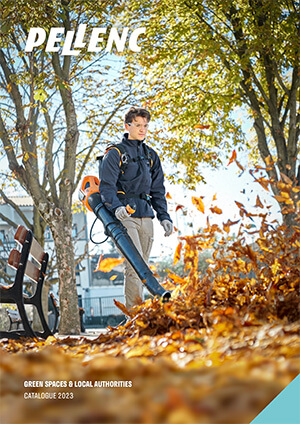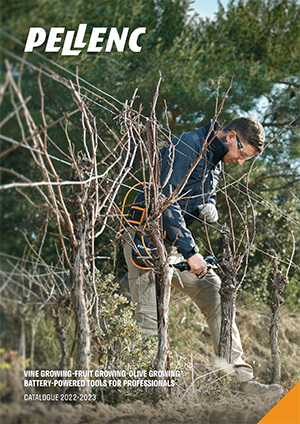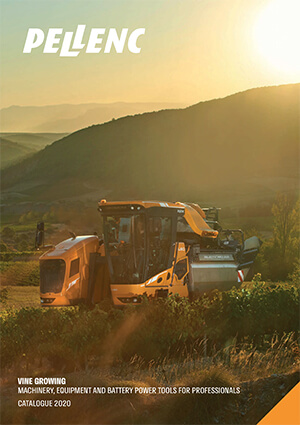Arguably one of the most important times in the yearly life cycle of the vine.
Every year we deal with changing circumstance’s. This year is no different, so adaptability is the name of the game.
Observations – the market is tightening (pretty dam obvious), a light 2022 cropping year (thank-god, a bumper crop would have become an over supply disaster), leaving crop on the vine instead of being paid a pittance is a smart move, community engagement is more important than ever to move forward with fresh new ideas.
What does this mean about pruning?
Understand your circumstance. This is where we can help because we listen before we give advice and we do ask probing questions.
Once we understand your pruning needs we match our pruning teams and equipment to task.
Pridham Viticulture are reliable and if we can’t do the job or can’t get there we will say so. If we say yes you are guaranteed the job get be done.
We also supply a range of Pellenc battery powered secateurs for those of you who take on this task yourselves.
We will operate 3 fully equipped netting machine plus crew for 2022 – 2023 vintage. This will reduce work bottlenecks and crew fatigue. Result – higher level of efficiency and happier people all round.
We can also advise on the most effective lay out of nets and application logistics.
We have some stock of new high-quality nets 18×300 meter 35gsm hexagonal knit for $1,820+gst per roll. Looked after they should last 15 years. Call us if you need any.
Some bird netting tips
- 3.3 nets will cover 1 ha of vineyard – rule of thumb calculation when trying to work out how many nets you need.
- When retrieving nets remove as many dry sticks as possible. This will dramatically increase the life of your nets.
- When retrieving nets label them with a quality grade A, B or C to manage future upgrades.
- When storing nets place on pallets off the ground , away from the sun and keep rats under control.
View more about our netting service.
Have a great vintage from the Pridham Viticulture team.
Organising your harvest (machine or hand) is a little more than just ringing around for the cheapest price.
Firstly before you contact a harvest company be prepared with your vineyard harvest information.
Things to consider are:
- how many hectares,
- realistic crop estimate,
- configuration of your block (headland size, undulating, row widths, etc),
- canopy type, vineyard age & condition,
- bin sizes,
- where is the closest loading area and are there suitable wash down facilities.
All this information will save time enabling the harvest company to provide sound advice and pricing options.
Compliance is a normal part of labour operations. Legally it cannot be avoided. Be sure the company you deal with manages employees as per current wine industry labour laws and legislated wage rates.
Your harvest is too valuable not to put effort into planning, contact us if you need support and advice.
Happy Harvest
In part one, we discussed the definition of sustainable farming, and now we must understand how we hurt the earth before we can change what we do.
Our mother earth doesn’t care what we do to it, we do. Profound comment?
But when we think about it our earth is simply responding to what we do to it and let’s face it, it’s ugly.
I would like to explore the idea of a 3-fold sustainability approach.
- The soil and air (let’s refer to the ancient elements of earth, air, fire & water),
- Our social structure & interactions,
- Economic structure.
These do seem obvious, but humans have a long way to go for all these areas to work in sync and to great effect when it comes to living within sustainable limits.
The soil and air
The soil and air are the basis of all life. This is where we all come from and end up. We are recycled along with every living process.
The elements cycle in the states of earth, air, fire & water.
When we begin to understand how these states interplay, we can understand how easily we can upset the balance and cause climatic events. E.g. clearing forest thus drying the landscape affecting the salt cycle and increasing the risk of summer bush fires and pushing carbon into the air cycle rather than the stable earth cycle. Cause and effect.
There are so many examples of human progression without a scant thought to how it affects these natural cycles. As I mentioned earlier the earth doesn’t care it just responds making our lives harder to live.
We can reverse this trend, but it takes conviction.
Our social structure & interactions.
We do things and we can undo things. Humans are resilient and adaptable social creatures. In the space of my life, I have always been taught and exposed to competition. It’s good to win and get ahead, progress and grow otherwise you don’t survive. Yet to manage competition in a society we require endless levels of regulation and compliance to conform to social order.
The flip side of competition is cooperation, something that’s taken me half a lifetime to grasp and now beginning to master. The results can be astounding as to what can be achieved is a short space of time. If a wide range of communities work together in cooperation rather than competition, we can change how we do things -and quickly.
We can discuss how our actions affect cycles and come to a consensus to what is acceptable. Balancing actions, effect, repair.
An example of this is we were in a group discussion recently at a local Viticultural conference. The topic of great interest was carbon cycle management, measurement, and accounting. We all recognise the opportunities this will present in a future economy, so have banded together to apply for federal grants to take steps forward and help develop systems of the future.
We have the people, the landmass, and the organisations all we are doing is working cooperatively to create change. We are not waiting for someone else to become more sustainable nor blaming someone else for not. We need to get on with the job. Like minded humans can achieve lasting change.
I was very enlightened recently at a Viticultural conference that nobody disagrees with climate change, and we all understand the need to move rapidly to change how we go about managing our soils and business enterprises.
Economic structure
A logical step would be to recognise that we are entering the new Carbon economy. Carbon will become a valuable commodity. Another way of looking at this is to imagine we are currently cycling carbon upwards (earth to atmosphere).
We want economic policies that encourage mining carbon from the atmosphere and depositing it in the earth (in a stable form).
A simplistic way of looking at it but essentially its exactly what we need to do to mitigate human living habits thus improving our fragile soils bringing many areas of land back to life.
Governments have a lot to play in the policy field. Currently we move two steps forward and one back. The issue politicking.
Governments of all sides lack general agreement due to the opposition of most ideas unless they are amended to completely unworkable position then dropped. We end up with second rate policies. It is a big problem and I wish I have an answer.
Should opposition parties be recognised and thanked for their contribution? it may be a start.
In the next edition, we will look at a future carbon economy and imagine how is can work plus steps to get there.
Thanks for reading, Ben.
I am asked from time to time what is the meaning or significance of the Pridham Viticulture coloured triangle.
The concept came to me about 35 years ago when we were setting up a family horticultural enterprise at Kuitpo. Our family researched many alternative farming approaches but decided to focus on biodynamic methods. Our aim was to practice sustainability (before the word was a catch phrase), and biodynamic practices can deliver this in organic, ecological, and ethical ways.
The coloured triangle image was based upon the methods and our understanding of what we started to practice at the time. The colours represent the 4 ancient elements – Earth, Air, Fire and Water. The triangle represents the constant cycling and revitalisation of these elements.
The image represents our way of looking at farming systems. We take a holistic approach and our work practices promote biodiversity and natural ecosystems by integrating science and nature. Sustainable land management practices are an underpinning constant in our business.

Don’t be fooled, bare soil is not good for the water cycle in our farming systems. We talk about soil water retention, but it cannot be done without healthy plant growth.
Plants create a carbon/humus sponge that is the most superior method of retaining water thus fuelling soil biology and nutrient cycling, plant growth and vine health.
The photos below show how well ground cover works after rain.
This photo shows a section of soil with no cover. 5 hours after a rain period the soil surface was dry. Beneath the surface the soil was almost completely dry. Most of the moisture simply evaporated before it could penetrate the surface. No plant matter on or in the soil creates compacted soils.

Soil under vine with remanent plant & root residues protecting the surface. This photo is taken between drippers 5 hours after rain. Notice the colour difference that moisture makes.

Same as above but under vine at dripper outlet. Notice the moisture holding just below surface. The plant residues are creating the sponge affect so water hangs around for longer with less evaporation to atmosphere.

Vineyard mid row bare surface section (a meter apart). This is 5 hours after rain. Notice how dry the surface is. Most of the rain has evaporated before being able to infiltrate.

Vineyard mid row, next to bare surface area that has surface plant residue pulled back to expose moist soil surface, 5 hours after rain. Notice the colour difference to photo above.

What is a definition of modern sustainable farming? In some ways it’s become a pot of gold at the end of the rainbow.
Sustainable farming has become clouded with marketing terms in many cases to gain sales growth advantage. So who and what can we trust?
My aim over the next few months is to give some insight as to what I have experienced over the past few decades and my learnings.
This is not to say that my views are right or wrong in the eyes of other practitioners that may have come to other conclusions over time. My aim is to encourage discussion, experimentation and collaboration to evolve our community thinking with-in the farming sector. Collaborative effort is a social process.
My first topic is to give sustainability a structural road map.
My early experiences with sustainability began around 1988 when I attended a bio-dynamic conference in Kyabram Victoria at a local farmers orchard.
There was over 120 people that attended and was the first time I encountered the philosophy to the late Alex Podolinsky. This not only opened my eyes but my mind and imagination into the invisible glory of the soil.
Since this early period there has been an explosion of sustainability and environmental methods, systems, certifying organisations and spin off groups such as GMO free, free range, grass fed, low input, chemical free, etc.
Recently carbon neutral, zero waste plus others have been added to our sustainability push. It has worked well from the point of view that is becoming front and centre of our societal thinking but not all things are equal and there is confusion as to what really works and what does not.
Many so-called methods are just simply statements that have no measurements nor proof whatsoever.
Illustrated is my roadmap to try and make sense of defining sustainability (this will evolve further over time).
Sustainable farming… the big umbrella
System & Methods (established)
- Regenerative agriculture
- Biodynamic
- Organic
- Carbon neutral (an unusual one as carbon is constantly cycling -it never stands still)
Systems & Methods with no proof (statement based)
- Grass fed
- GMO free
- Chemical free
- Free range
- Low input
Measurement & proof systems
- SWA Sustainable Wine growing Australia
- Organic certification –NASAA, Aust Organic.
- Bio Dynamic – Demeter, Australian Certified Organic
- Carbon Neutral – Climate Active
- Plus many more are established, and more are popping up…
The Drivers
- People and communities on mass becoming passionate about saving the planet for various personal or community reasons (health, biodiversity, soil health, nutritious and ethical food, fixing the carbon problem, economics, air quality and the list goes on)
- Businesses that are real about climate change, soil health and human health – forming a collaborative culture and not working in isolation.
- Governments when they actually work cooperatively and show leadership, trusted policy development can move mountains.
Why do we choose a particular path? What are the main drivers?
There is so much to choose from in the current marketplace of “sustainability” making decisions confusing for many Farmers.
I have been in this situation several times over the past few decades as new systems and methods have emerged and many fallen away.
To manage this dilemma my approach is to firstly engage with your local farming community and come to a consensus as to what system/method will collectively suit your community.
A group of like minds with common values will more than likely develop and evolve the system/method to suit your unique regions soils, geography, and peoples. This is what creates lasting change and a spirit of community cooperation and pride.
I use this example because this what has happened in my region of McLaren Vale. This model has been successful in many other wine regions and farming communities also.
A community system/method that evolves can introduce change with more ease especially as new technology, ideas and farming techniques present us.
Next steps
In my next sessions I will attempt to delve into what various systems and methods attempt to deliver to farming.
Also to venture into how we understand and read our soils and landscapes. We must understand how we hurt the earth before we change what we do.
Pridham Viticulture and Sustainability fit together, it’s what we think and breathe. It has become culturalized.
Our passionate and cooperative community in McLaren Vale and Fleurieu regions havwe worked collaboratively to develop techniques that continually evolve and adapt to our changing environment.
We never stop thinking, we always ask questions, we never stop learning.
That is what we do.
Ask yourself the question – what is sustainability to you.
Thanks for reading, Ben
Drip tube recycling -save the planet
Pridham Viticulture will give you instructions on how to prepare your vineyard drip tube so rolling up is fast and cost effective. We also advise on recycling and packing methods.
Cost of drip tube rollup service includes 2 crew & all equipment – $155.00 +gst

Most regions are experiencing a later start to the 2021 pruning season due to dryness and plenty of leaves still hanging on. Patience is required as the vines haven’t fully shut down for the winter.
Pridham Viticulture have expanded our range of winter services. These include vineyard pruning and reconstruction (an area we specialise in), olive tree pruning and local municipal ornamental tree pruning.
We use zero emission Pellenc electric tools that we also retail to the public with our sales and service centre based in McLaren Vale (see our range & pricing online).
Our employees we value highly. We constantly train our employees and build strong relationships which makes for a collaborative, productive and happy work-place.
For ideas, job quotes or management plans give us a call and see what we can do for you.
What’s happening in the sustainability electric space in Agriculture.
Pellenc are on a continuous technology development and improvement program which means when it comes to Battery power its getting cheaper and the power is greater. 2021 we are predicting a massive shift away from fossil fuel-based equipment to electric. Demand is growing, prices are stable and falling.
At Pridham Viticulture It’s time for servicing your battery equipment especially if you own Pruning equipment and Olivions. Pridham Viticulture in McLaren Vale we have a fully equipped service workshop to deal with equipment servicing and spare parts. If you live far-away you can post your electric tools and we will post them back to after servicing. It’s important to get your Pellenc equipment services so we can identify any problems before they become major issues.
2021 new service for McLaren Vale, Adelaide Hills and Fleurieu region. Pridham Viticulture are introducing Olivion electric olive rake hire for $100+gst per day ($500 bond required) Call or text us for more information 0414 600 342.
Check our website for equipment range and competitive pricing. We are here to provide sound advice for your needs.


